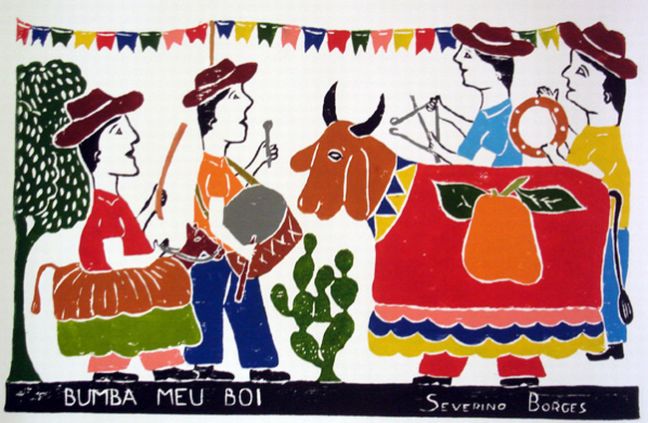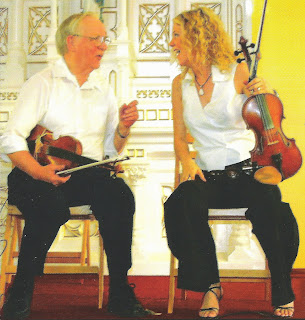Howie MacDonald & Ashley MacIsaac
Cape Breton Fiddle Music -Not Calm
2001
Tracks:
01. Intro, Ashley
02. Old Time Wedding Reel Medley
03. Mocking Bird Medley
04. Buttermilk Mary Medley
05. Constitution Breakdown Medley
06. River Bend, Mason's Apron Medley
07. Tulloch Gorm Medley
Cape Breton Fiddle Music -Not Calm
2001
Tracks:
01. Intro, Ashley
02. Old Time Wedding Reel Medley
03. Mocking Bird Medley
04. Buttermilk Mary Medley
05. Constitution Breakdown Medley
06. River Bend, Mason's Apron Medley
07. Tulloch Gorm Medley
♫☆`*♥¸¸.•*¨*•♫☆`*♥¸¸.•*¨*•☆♫
.ღ•:*´♥`*:•ღ.
♫☆`*♥¸¸.•*¨*•☆♫`*♥¸¸.•*¨*•☆♫
.ღ•:*´♥`*:•ღ.
♫☆`*♥¸¸.•*¨*•☆♫`*♥¸¸.•*¨*•☆♫
Feet Stomping Wild.....
Two of Cape Breton's finest fiddlers team up for their first recording together..... Howie MacDonald and Ashley MacIsaac...and if that is NOT enough...it was recorded live with all the energy found in a typical Maritime Pub. Cape Breton Fiddle Music NOT CALM is Howie's 9th album and Ashley's 7th. Both appear on numerous compilations including the new " more Bridges 2 cross " coming this summer 2001. There are tons of tunes here for you to stomp your feet to and maybe have a swing around the kitchen...
*
Don't expect to sit back and relax! It's anything but calm! This one gets the heart racing- and the china bouncing off the cabinet! The whole album is very raw and exciting, giving you ten times more pleasure than you paid for.
Absolutely amazing players -I was delighted to hear my own personal all-time favourite tune "Welcome to the Shetlands" by Willie hunter, performed by Howie and Ashley, probably the best rendition I have ever heard. The piano on "Mocking Bird Medley" is absolutely outstanding; On this album Howie plays guitar and piano, as well as fiddle, beautifully, and in true Cape Breton style, multi-talented to say the very least, He was awarded Roots/Traditional Artist of the Year Award, 1991 (E.C.M.A.); and nominated for several others.
Fellow "Caper", Ashley MacIsaac, is a step - dancing explosion of energy, drive and talent; an outstanding player; it's difficult to believe he is only 26. I was not surprised to learn he is a cousin of Nova Scotia's Natalie MacMaster. It figures!
You'll be tapping your feet from beginning to end of this hour-long fabulous performance of almost 70 well-known fiddle tunes, and then you will want to play it again and again.
'NOT CALM' was inspired by the death of a close mutual friend of Howie and Ashley's - John Morris Rankin. It was recorded live 'off the floor', in various pubs throughout Nova Scotia in spring 2000 but wasn't released until spring 2001. The tunes are very off- the-cuff and spontaneous - as you can tell! The fact that it falters at times and the odd mistake here and there, prove that it is live and unrehearsed - this makes it all the more special. You can hear the audience cheering and the sound of feet stomping on the floor, you can feel the energy, and it's almost as if they are playing in your own living room! Although Ashley and Howie have played gigs together on and off for many years, this is their first recording together, NOT CALM is Howie's ninth recording and Ashley's seventh, Both appear on numerous compilations including the new " more bridges 2 cross" coming this summer 2001, personally, I can't wait! On the last track, it comes to a very abrupt end as it cuts out mid-tune - I can only assume the tape ran out and the cut was too good to lose! Have you ever heard a CD end in mid air…………..?
This will be a favourite for decades to come.
They are definitely my "New Hero's"
Breathtaking!
Kirsty Robson
Review From www.livingtradition.co.uk
Absolutely amazing players -I was delighted to hear my own personal all-time favourite tune "Welcome to the Shetlands" by Willie hunter, performed by Howie and Ashley, probably the best rendition I have ever heard. The piano on "Mocking Bird Medley" is absolutely outstanding; On this album Howie plays guitar and piano, as well as fiddle, beautifully, and in true Cape Breton style, multi-talented to say the very least, He was awarded Roots/Traditional Artist of the Year Award, 1991 (E.C.M.A.); and nominated for several others.
Fellow "Caper", Ashley MacIsaac, is a step - dancing explosion of energy, drive and talent; an outstanding player; it's difficult to believe he is only 26. I was not surprised to learn he is a cousin of Nova Scotia's Natalie MacMaster. It figures!
You'll be tapping your feet from beginning to end of this hour-long fabulous performance of almost 70 well-known fiddle tunes, and then you will want to play it again and again.
'NOT CALM' was inspired by the death of a close mutual friend of Howie and Ashley's - John Morris Rankin. It was recorded live 'off the floor', in various pubs throughout Nova Scotia in spring 2000 but wasn't released until spring 2001. The tunes are very off- the-cuff and spontaneous - as you can tell! The fact that it falters at times and the odd mistake here and there, prove that it is live and unrehearsed - this makes it all the more special. You can hear the audience cheering and the sound of feet stomping on the floor, you can feel the energy, and it's almost as if they are playing in your own living room! Although Ashley and Howie have played gigs together on and off for many years, this is their first recording together, NOT CALM is Howie's ninth recording and Ashley's seventh, Both appear on numerous compilations including the new " more bridges 2 cross" coming this summer 2001, personally, I can't wait! On the last track, it comes to a very abrupt end as it cuts out mid-tune - I can only assume the tape ran out and the cut was too good to lose! Have you ever heard a CD end in mid air…………..?
This will be a favourite for decades to come.
They are definitely my "New Hero's"
Breathtaking!
Kirsty Robson
Review From www.livingtradition.co.uk
*
♥




























%20-26%2066%20centre%20-5%2031.jpg)










































+Front.jpg)
















